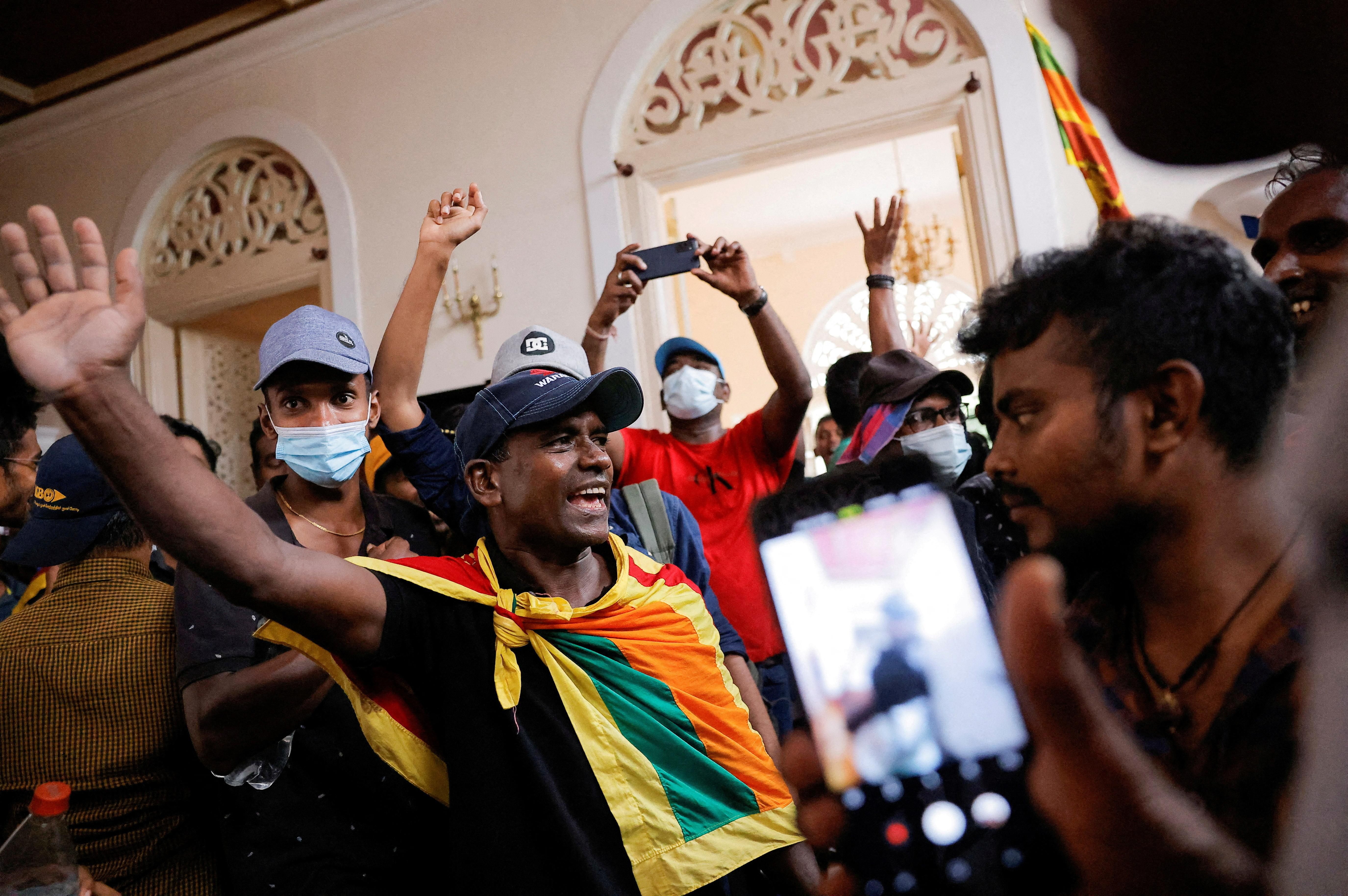What We’re Watching: Sri Lankan anger boils over, Musk sours on Twitter
Protesters occupy presidential palace in Colombo
Long-simmering public wrath directed at Sri Lanka’s leader over the country’s economic collapse finally boiled over.
Fed up with months of food and fuel shortages, thousands of protesters broke through security barricades on Saturday to invade the official residence of President Gotabaya Rajapaksa, who had fled hours earlier. The demonstrators ransacked the premises, swam in the pool, and took selfies surrounded by luxury that ordinary Sri Lankans can only dream of. They also set fire to the nearby prime minister’s home, and say they won’t leave until Rajapaksa steps down — which he has agreed to do by Wednesday.
How did we get here? Sri Lanka's economic collapse is as much a result of the government's mismanagement — and piling debt — as the country's vulnerability to external shocks: first the loss of tourism revenue due to the pandemic, and more recently inflation and shortages aggravated by Russia's war in Ukraine. Sri Lanka defaulted for the first time ever on its sovereign debt in May and later ran out of foreign currency to pay for basic imports. India has provided a credit line and China a currency swap, but Sri Lanka still faces a humanitarian crisis.
What happens next? Opposition leaders met on Sunday in Colombo to negotiate the composition of an all-party interim government. Once they show a majority of votes in parliament, they'll accept the resignation of the president and the PM, and the speaker will become caretaker president. Rajapaksa’s whereabouts remain unknown.
The much bigger problem, though, is the economy. Sri Lanka needs a massive IMF bailout, but it'll have strings attached: the international lender requires economic reforms that’ll be unpopular yet ensure the now-bankrupt state will be able to pay back the money. Sri Lanka’s fate depends on the new government agreeing to those terms.
